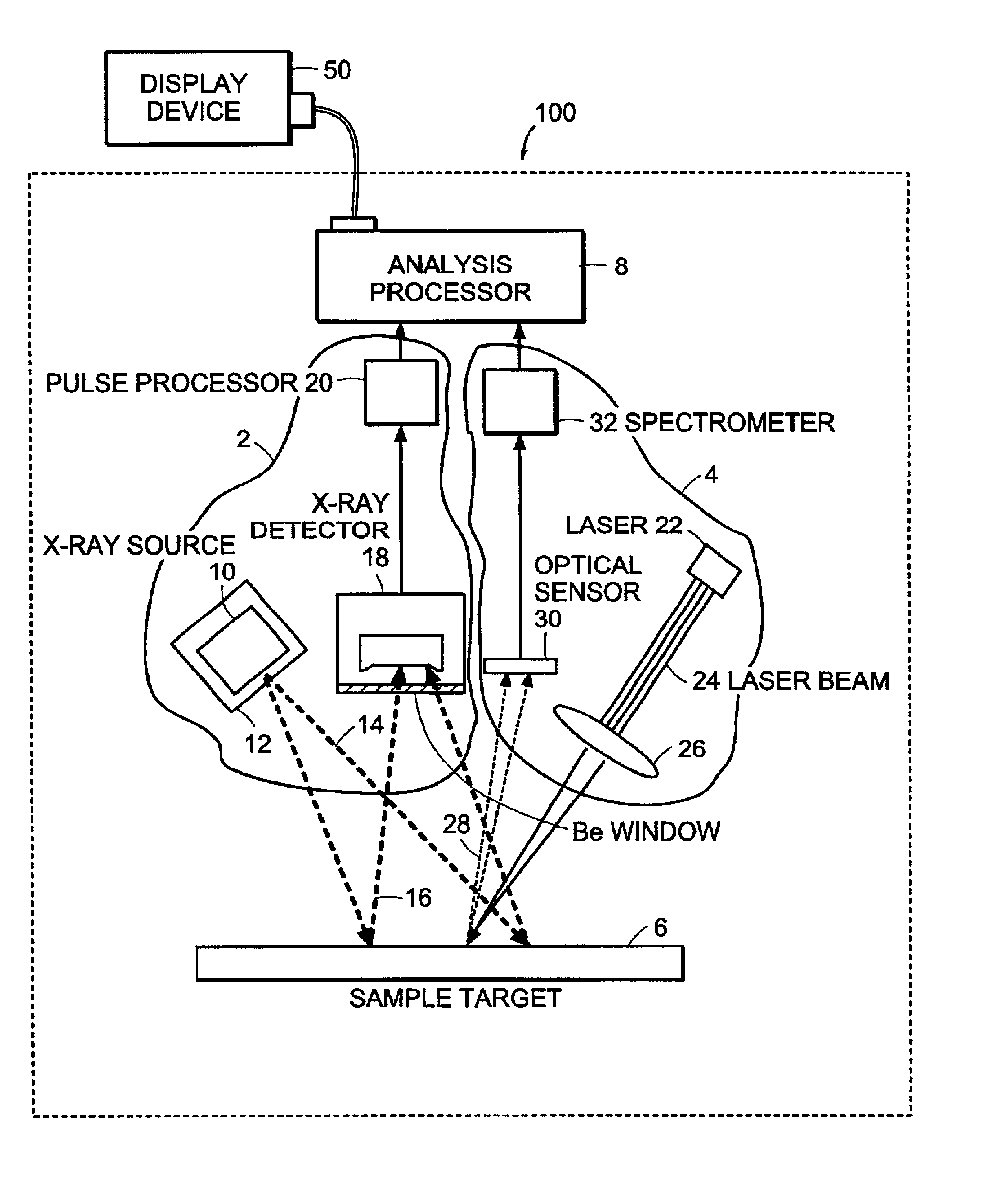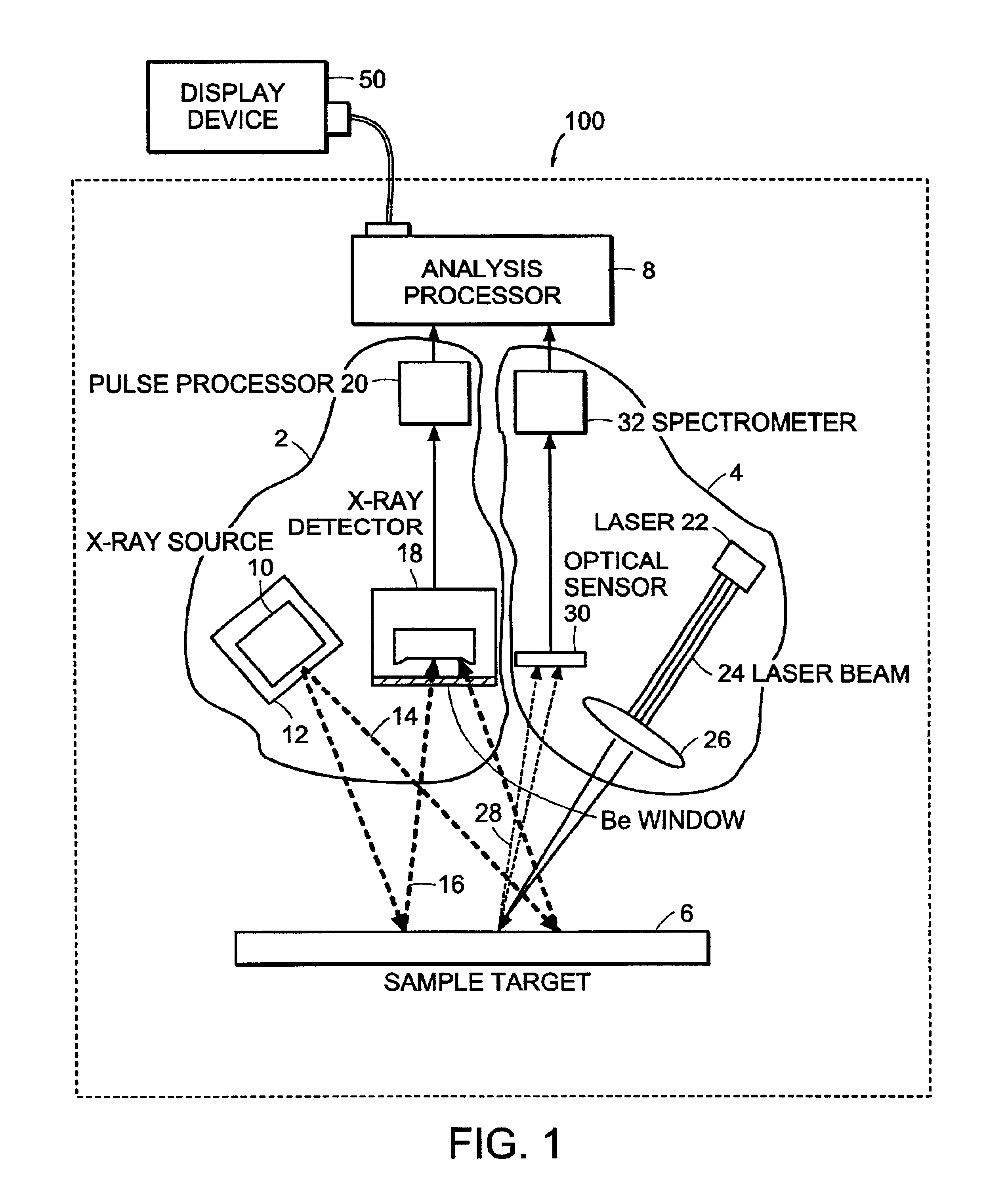X-ray fluorescence combined with laser induced photon spectroscopy
a laser induced photon and fluorescence technology, applied in the direction of fluorescence/phosphorescence, instruments, optical radiation measurement, etc., can solve the problems of not having a quantitative value for carbon, oxygen, fluorine and sodium and other very light elements, and the efficiency of optical emission production, that is, the intensities of induced spectral lines, is not strong, and the technique has not been combined into a single device to produce a more complete composition
- Summary
- Abstract
- Description
- Claims
- Application Information
AI Technical Summary
Benefits of technology
Problems solved by technology
Method used
Image
Examples
Embodiment Construction
FIG. 1 is a device 100 for determining the composition of a test material such as a metal alloy, soil, artwork or any matrix. The device incorporates both an XRF detector 2 along with a LIPF (Laser Inducted Photon Fluorescence) detector 4. The two detectors are electrically coupled to an analysis processor 8. The analysis processor 8 receives measurement signals from the XRF detector 2 and the LIPF detector 4 and analyzes the produced data to determine the elements which are the composition of the test material. The LWPF 4 detector may use either continuous or time-resolved spectroscopy. In one embodiment, the measurements made by the XRF and LIPF detectors occur within seconds of each other. In other embodiments, the measurements occur simultaneously. Preferably, the detectors work in conjunction such that the measurements take place during an interval which is less than the time it would take to remove the test sample from an XRF detector and place the test sample in a separate LI...
PUM
| Property | Measurement | Unit |
|---|---|---|
| elemental composition | aaaaa | aaaaa |
| optical signal | aaaaa | aaaaa |
| optical emission | aaaaa | aaaaa |
Abstract
Description
Claims
Application Information
 Login to View More
Login to View More - R&D
- Intellectual Property
- Life Sciences
- Materials
- Tech Scout
- Unparalleled Data Quality
- Higher Quality Content
- 60% Fewer Hallucinations
Browse by: Latest US Patents, China's latest patents, Technical Efficacy Thesaurus, Application Domain, Technology Topic, Popular Technical Reports.
© 2025 PatSnap. All rights reserved.Legal|Privacy policy|Modern Slavery Act Transparency Statement|Sitemap|About US| Contact US: help@patsnap.com



